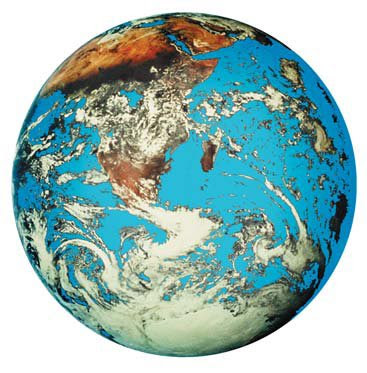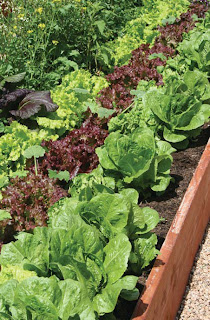
Montessorians are well versed when it comes to protecting the Earth and its environment. Dr. Montessori believed that "The land is where our roots are. The children must be taught to feel and live in harmony with the Earth." She also stated that "There is no description, no image in any book that is capable of replacing the sight of real trees, and all of the life to be found around them in a real forest." Studying environmental protection has a lasting impact on young children. In the Montessori curriculum, the study of the 5 Great Lessons awakens the child's sense of awe and wonder. We show the interconnectedness of all things in the universe. When we talk about being stewards to the planet, we instill a sense of global awareness and foster Dr. Montessori's belief that "We are all a single organism, one nation." In honor of our Montessori educational goals and Earth Day, we've gathered some great information and activity ideas for you to use in your Montessori classroom.
Earth Day Information and Activities to Celebrate in the Montessori Classroom
At a time when social activism was at a high point, the celebration of Earth Day was intended to promote and inspire awareness for the Earth's environment and our global community. On April 22, 1970, 20 million Americans (including 2,000 colleges and universities and 10,000 primary and secondary schools!) demonstrated for a healthier environment. At that time, the use of leaded fuel was rampant and industry produced smog and sludge as a sign of economic progress. People banded together to discuss such issues as clean air and drinking water, toxic waste, raw sewage, pesticide use (DDT) and run off. Although the 1960's had been a decade of ecologic awareness, Earth Day brought more citizen activism.
The success of the first Earth Day persuaded politicians to enact legislation to clean up the air, protect drinking water, as well as protect wildlife and areas such as forests and wetlands. From this, the Environmental Protection Agency (EPA) was created. In 1990, Earth Day went global with over 40 countries participating. This 20th anniversary celebration focused on recycling efforts worldwide. In 2000, Hundreds of millions of people from 184 countries focused on global warming and the need for "clean" energy. The 2007 celebration was the largest one yet, with an estimated one billion people participating internationally, with over 10,000 Earth Day events held around the world.
Here are some activities that you can do in your Montessori classroom to promote social and individual environmental responsibility:
- Discuss what it means to "Renew, Reuse, and Recycle".
- Keep a Conservation Diary for a week (you can create a chart for each day of the week with a checklist: Turned Off the TV, Walked Instead of Driving, Took a Shorter Shower, Turned Off the Lights, Played Outside, Other).
- Create awareness posters on how to protect the environment and post around your Montessori school. (Some ideas include: Recycle; Write/Draw on both sides of the paper; Take shorter showers; Ride your bike; Turn off the water when you brush your teeth; Turn off the lights).
- Research endangered species. Make a book to read to younger Montessori students.
- Create a timeline of environmental policies in your country.
- Research how to save energy in the home. Create a checklist and perform an audit with your parents.
- Plant a container herb garden.

- Plant an outdoor salad garden.
- Start a school compost pile. Invite a vermiculturist to talk about the role worms play in composting.
- Measure how much waste the classroom generates in a week. Discuss ways to reduce. (Compost food, recycle paper and plastic, use re-useable containers instead of disposable packaging, etc.)
- Go organic for the day! Teach children that seasonal fruits and vegetables are less likely to contain harmful pesticides.
- Visit a local farmer's market. Eating local supports the economy and involves fewer miles traveled (lowers emitted pollutants)!
- Encourage children to use dishtowels and cloth napkins instead of paper products.
- Learn how to cook one-pot meals (stews, soups, casseroles, salads) to use less energy.
- Research the properties of vinegar, lemon juice and baking soda as natural cleaning products and try some around the classroom.
- Plant plants that reduce indoor toxins such as English Ivy, bamboo palm, spider plants, and ferns. These reduce formaldehyde, carbon dioxide, and cigarette smoke. English Ivy even absorbs molds.
For more information on Earth Day, visit the US Environmental Protection Agency website.
As much as possible, NAMC’s web blog reflects the Montessori curriculum as provided in its teacher training programs. We realize and respect that Montessori schools are unique and may vary their schedules and offerings in accordance with the needs of their individual communities. We hope that our readers will find our articles useful and inspiring as a contribution to the global Montessori community.
© North American Montessori Center - originally posted in its entirety at Montessori Teacher Training on Tuesday, April 8, 2008.
© North American Montessori Center - originally posted in its entirety at Montessori Teacher Training on Tuesday, April 8, 2008.

0 comments:
Post a Comment
Have questions or comments? Let us know what you thought about this article!
We appreciate feedback and love to discuss with our readers further.